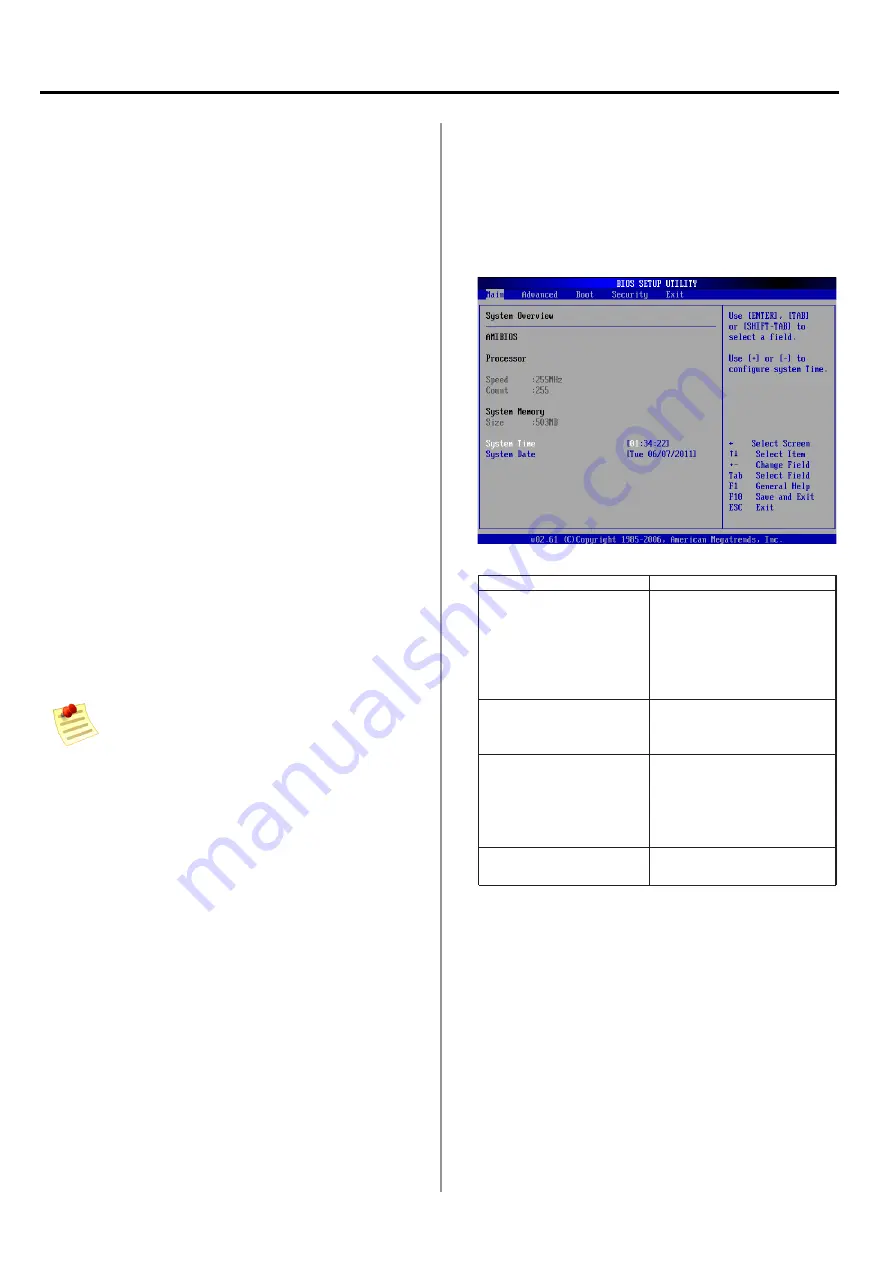
Chapter
4
:
BIOS Settings
I J
K L
Accessing the BIOS menu
Use the BIOS Setup program when you are installing a
motherboard, reconfiguring your system, or prompted to
“Run Setup ” This section explains how to configure your
system using this utility
Even if you are not prompted to use the Setup program,
you can change the configuration of your computer in the
future For example, you can enable the security password
feature or change the power management settings This
requires you to reconfigure your system using the BIOS
Setup program so that the computer can recognize these
changes and record them in the CMOS RAM
When you start up the computer, the system provides you
with the opportunity to run this program Press <Delete>
during the Power-On Self-Test (POST) to enter the Setup
utility(There are a few cases that other keys are used, such
as <F1>, <F2>, and so on ); otherwise, POST continues
with its test routines
If you wish to enter Setup after POST, restart the system
by pressing <Ctrl+Alt+Delete>, or by pressing the reset
button on the system chassis You can also restart by
turning the system off and then back on Do this last
option only if the first two failed
The Setup program is designed to make it as easy to use as
possible Being a menu-driven program, it lets you scroll
through the various sub-menus and make your selections
from the available options using the navigation keys
Note:
This manual describes the standard look
of the setup screen The motherboard manufacturer
has the ability to change any and all of the settings
described in this manual This means that some of the
options described in this manual do not exist in your
motherboard’s AMIBIOS
Navigating the BIOS menu
The BIOS setup/utility uses a key-based navigation system
called hot keys Most of the BIOS setup utility hot keys can
be used at any time during the setup navigation process
These keys include <F1>, <F10>, <Enter>, <ESC>, <Arrow>
keys, and so on
Keys
Description
Left / Right
The Left and Right <Arrow>
keys allow you to select an
setup screen
For example: Main screen,
Advanced screen, Chipset
screen, and so on
Up /Down
The Up and Down <Arrow>
keys allow you to select an
setup item or sub-screen
+ - Plus/Minus
The Plus and Minus <Arrow>
keys allow you to change the
field value of a particular setup
item
For example: Date and Time
Tab
The <Tab> key allows you to
select setup fields
/
/
/
IM
M
-
L30D
User Manual
9













































